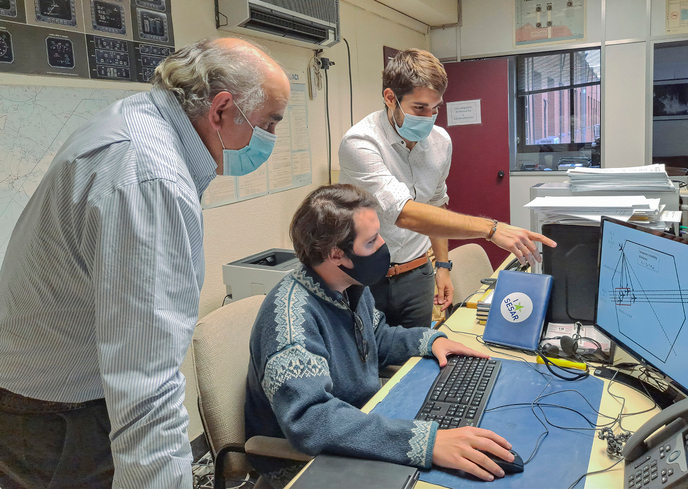AI assistant helps air traffic controllers maintain situational awareness
Aviation capacity – both on the ground and in the air – is limited by the workload capacity of air traffic controllers. During busy periods, flights are routinely delayed or directed away from potentially congested airspace, wasting time and fuel. Consequently, the air traffic management (ATM) sector has been examining ways of applying automation to help handle workload, and to free up the mental capacity of controllers so they can handle more aircraft and focus on safety-critical tasks. “Much of this work has focused on automating particular tasks, such as detecting conflicts,” explains AISA (AI Situational Awareness Foundation for Advancing Automation) project coordinator Tomislav Radisic from the Faculty of Transport and Traffic Sciences at the University of Zagreb in Croatia. “A conflict is a situation where two aircraft are on track to be too close at some point in time. This usually means being within five nautical miles of each other.”
Automated situational awareness
The challenge facing air traffic controllers is that they have hundreds of individual tasks to perform daily. Instead of looking at automating individual tasks therefore, AISA sought to take a step back and develop a more foundational system. The project was funded within the framework of the SESAR Joint Undertaking, a public-private partnership set up to modernise Europe’s ATM system. “We wanted to develop something that would first actually monitor all existing tools, to give the system a kind of artificial situational awareness,” adds Radisic. “By keeping track of many things at the same time, we thought we could also automate a number of existing monitoring tasks.” The project team set about developing the prototype system. This was based on something called knowledge graphs, automatically generated from available aviation data. “These knowledge graphs help to explain relationships between different objects and concepts,” says Radisic. “So, for example, if we want to gain new knowledge about the situation, we can do that by reasoning over the facts we know to be true.” This kind of ‘mapping’ helped the project team to develop a system with much more situational awareness, capable of determining if the output of a particular automated tool reflected reality. “If, say, an automated tool suggests that two aircraft are in conflict, we can see in the knowledge graph that this is perhaps not the case,” explains Radisic.
Meeting industry needs
A number of simulated experiments with air traffic controllers were then conducted. The project team wanted to see how effective the system was at monitoring the performance of automated tools – whether it picked up anything that human controllers didn’t – and how useful the automation of certain monitoring tasks was. “The first thing to say is that the system worked as expected,” notes Radisic. “There were no lapses in situational awareness, and in fact the system was able to react to outputs that did not reflect reality, which human controllers were at times unable to.” Automated monitoring designed to support controllers received more nuanced feedback. “Input was delivered to controllers via pre-recorded messages, at specific points we thought would be relevant,” he says. “Controllers however generally didn’t like this way of receiving information, as they expect only pilots to talk to them. Another issue was uncertainty over when to present this information; some controllers found the information delivered too early.” Such feedback is critically important. The involvement of critical end users early in this technological development will help to ensure that the final system is ideally suited to their needs. “This project began by looking into how this could fit into current systems, but we are also interested in shaping future ATM concepts past 2035,” adds Radisic. Next steps therefore will include a closer look at how best to present these automated monitoring alerts to controllers, and when this information should be presented. Radisic envisages the development of a visual human-machine interface. “This is all about understanding the needs of the traffic controller,” remarks Radisic. The project also underlines the sector’s overarching commitment to safety. While machine learning tools can undoubtedly achieve efficiencies and boost safety in aviation, it is critical controllers can be assured that they are performing properly. To this end, the AISA project has made an important contribution in this ongoing conversation.
Keywords
AISA, aviation, air, traffic, machine learning, airspace, fuel, aircraft







